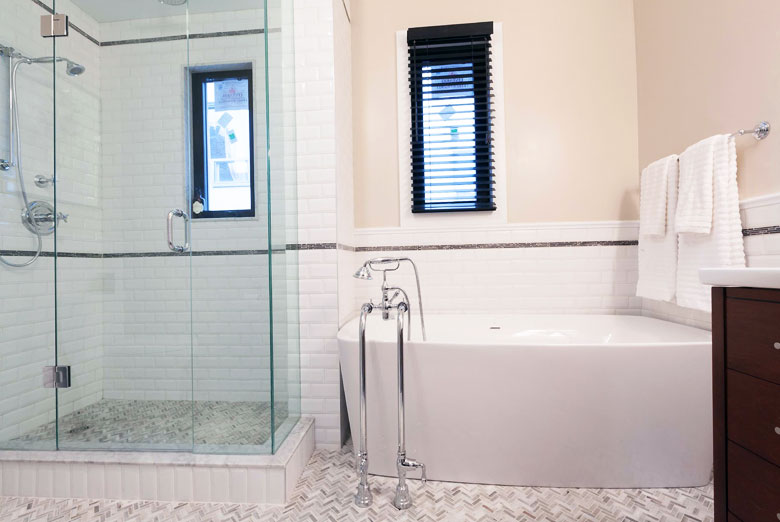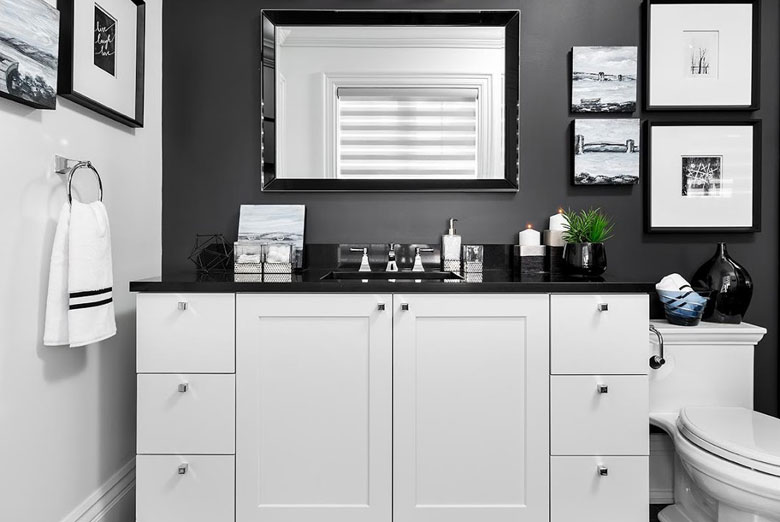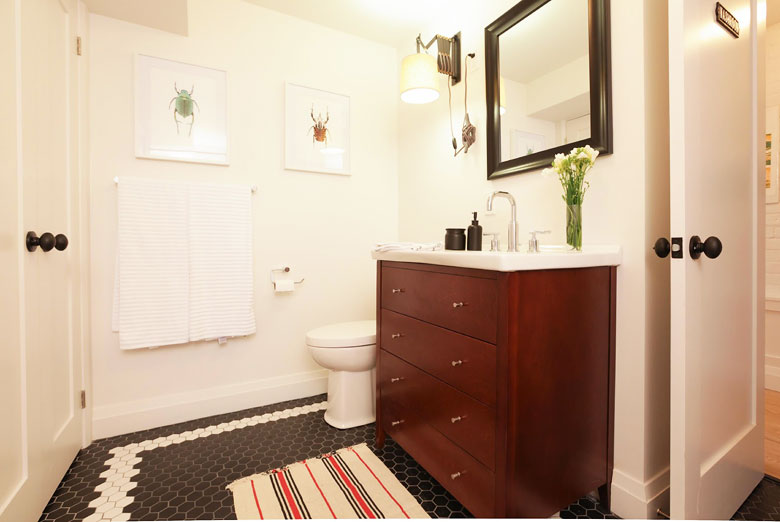
Scott McGillivray is a real estate expert and host of HGTV Canada’s Income Property and Moving the McGillivrays.
When it comes to adding value to a home, the bathroom is second only to the kitchen. And while bathroom renovations can get costly, you don’t always have to spend a fortune in order to increase the value of your home. Here are some of my recommendations.
Include a Bathtub
There’s been a huge trend in the last few years of replacing bathtubs with luxury showers. If you don’t have another tub in the house, this is a big mistake for ROI. Generally speaking, tubs are preferable for families with young kids, as bathing toddlers in a shower can be tricky. So, if you don’t have one, you might be limiting the number of potential buyers when it’s time to sell. There’s certainly nothing wrong with indulging in a luxury shower if that’s your thing, just make sure there’s a bathtub somewhere in the house.

Vanity With Storage
As far as I’m concerned, a vanity with storage is an absolute must in any bathroom renovation. Everyone needs a place for towels, extra toilet paper, cleaning products and more. Usually I prefer closed storage in order to conceal the plumbing, however a mix of open and closed can look great as well. Don’t get me wrong, I have nothing against pedestal sinks, but I believe they should be limited to powder rooms where storage isn’t as important.
Vanity With Counter Space
When choosing your vanity top, make sure it has some space to place a soap dish, toothbrush holder and so on. Some sinks extend right to the very edge of the vanity, leaving no room for these little necessities of everyday life. So, make sure you’re creating enough space on the vanity for the bathroom to be functional.

Related: 15 Renovations That Add Value to an Income Property
In-Floor Heating
A few years ago, I would have told you that in-floor heating was only for luxury homes. But not anymore. If you’re already putting in a new floor, there’s little reason not to consider an electric floor warming system. Not only is stepping onto a warm floor far nicer than stepping onto a cold one, radiant floors also provide a great source of ambient heat, which is particularly helpful in bathrooms located in colder parts of the house (such as in basements or above garages).
The Right Flooring
If you want to maximize the ROI in a bathroom renovation, do not install hardwood flooring. As much as I like it in other parts of the house, it’s a big risk in a room where so much water flows in and out. In 99% of the bathrooms I renovate, I use either ceramic or porcelain tile. They’re both durable, waterproof and stain resistant. The only time I use hardwood is when it’s already existing and to remove it would add too much cost and compromise the home’s character.

Related: 20 Bathroom Floors That Make a Bold Statement
Waterproofing
The most important thing to address in a bathroom renovation is waterproofing. A lot of people mistakenly think that tiles and grout are waterproof enough – and that kind of thinking can lead to expensive problems. So, before you install your tiles, make sure you have a solid, waterproof foundation. Rather than drywall, use something like Kerdi that has a waterproof membrane on either side with a foam core. This will ensure that water won’t penetrate your walls and cause your tiles to crumble or get mouldy over time.
Images Courtesy of McGillivray Entertainment and HGTV Canada
HGTV your inbox.
By clicking "SIGN UP” you agree to receive emails from HGTV and accept Corus' Terms of Use and Corus' Privacy Policy.



